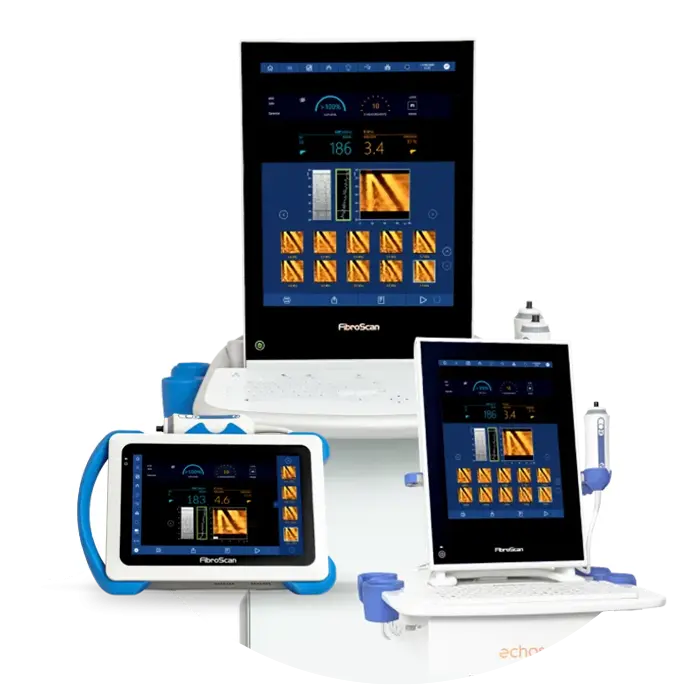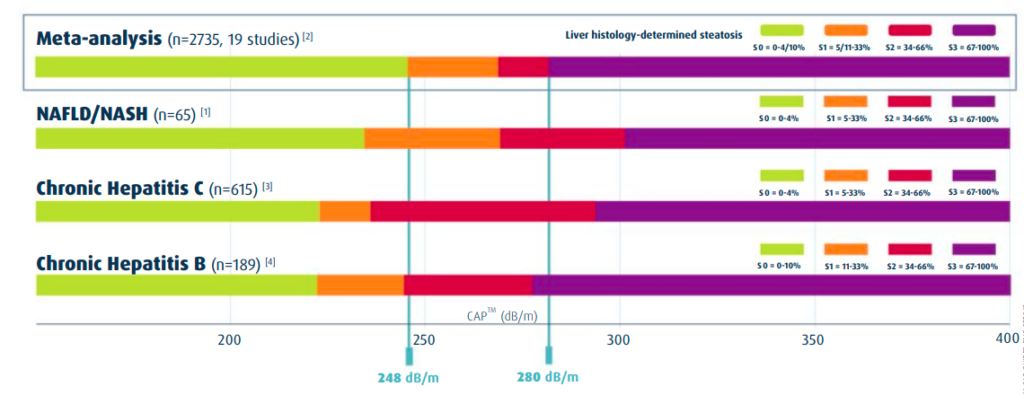
The FibroScan is a unique, precise, and effective medical device that provides the necessary clinical confidence to aid in the treatment and diagnosis of hepatic patients.
Based on Transient Elastography with Controlled Vibration (VCTE™), the FibroScan offers multiple parameters for a reliable, precise, and reproducible assessment of hepatic tissue stiffness: controlled vibration, controlled energy, and controlled algorithm. In addition to the aforementioned, it is also possible to measure CAP (hepatic steatosis), which, like the measurement of hepatic stiffness, is non-invasive, immediate, and can be performed by an operator not specialized in ultrasonic imaging. The clinical application of FibroScan represents an intelligent solution in the diagnosis and therapeutic definition of hepatic and viral patients, using advanced non-invasive technology.
Services that require: Gastroenterology, Internal Medicine, Infectious Diseases, among others.
MEDICAL AREAS OF INTEREST:


The FibroScan is a unique, precise, and effective medical device that provides the necessary clinical confidence to aid in the treatment and diagnosis of hepatic patients.
Based on Transient Elastography with Controlled Vibration (VCTE™), the FibroScan offers multiple parameters for a reliable, precise, and reproducible assessment of hepatic tissue stiffness: controlled vibration, controlled energy, and controlled algorithm. Additionally, it is possible to measure CAP (hepatic steatosis), which, like the measurement of hepatic stiffness, is non-invasive, immediate, and can be performed by an operator not specialized in ultrasonic imaging. The clinical application of FibroScan represents an intelligent solution in the diagnosis and therapeutic definition of hepatic and viral patients, utilizing advanced non-invasive technology.
Services that require: Gastroenterology, Internal Medicine, Infectious Diseases, among others.
MEDICAL AREAS OF INTEREST:
Access the webinar recording here:

- Webinars temáticos
- EASL Clinical Practice Guidelines on non-invasive tests for evaluation of liver disease severity and prognosis - 2021 update
- Cost of non-alcoholic steatohepatitis in Europe and the USA: The GAIN study
- Fibroscan liver stiffness after anti-viral treatment for hepatitis C is independently associated with adverse outcomes
- Expanding consensus in portal hypertension: Report of the Baveno VI Consensus Workshop: Stratifying risk and individualizing care for portal hypertension
- Cost-comparison analysis of FIB-4, ELF and fibroscan in community pathways for non alcoholic fatty liver disease
- Porto-sinusoidal vascular disease: proposal and description of a novel entity
- A relação entre o fígado gordo e a diabetes
Fibroscan for beginner level (certificate)